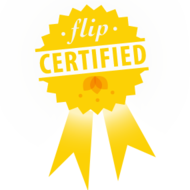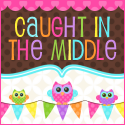We are all familiar with the baking soda and vinegar model of a volcano, but only a science teacher would fixate on how little this instructs about how a volcano actually works. Sure, it looks cool, but volcanoes really have nothing to do with some kind of substance pouring down, creating a chemical reaction and fizzing out of the top.
Instead, we decided to model volcanoes in a more accurate, albeit messier way. When we studied volcanoes, we focused primarily on the types of sites where volcanoes occur (convergent plate boundaries, divergent plate boundaries and above hot spots), as well as the basic parts of a volcano. The magma/lava, afterall, comes from below the surface and as it cools on Earth's surface, new rock is created, not just a fizzy mess of baking soda and vinegar.
Our volcanoes were constructed out of clay. We constructed the mounds around a straw that had been poked through a paper plate and secured in place on both sides with rubber bands. The paper plate will represent Earth's surface, the clay represents the volcano mound and the straw will become the main pipe of this cinder cone-like volcano. Make sure that several inches of straw are exposed on the top of the plate and at least one inch below the plate. We constructed the volcano/straw structure on the first day of the lab, then let them dry over the weekend.


When we returned on Monday, the eruptions could begin. We created our own mock magma the same way we had for our seafloor spreading demonstration - white school glue mixed with red and yellow food dye. Carefully using a funnel, we filled a balloon with the magma, thus representing the magma chamber below the surface. Make sure not to overfill the balloon or it will be impossible to attach to the model. Only fill the round part of the balloon, not the neck.
We washed the funnels out right away to make sure that the glue did not dry, creating a permanently glued mess. Once the funnels were washed and the balloons filled, we carefully rubber-banded the balloons to the exposed inch of straw under the plate. It is nearly impossible to make the rubber band tight enough by wrapping it around, so I suggest using a slip or loop knot tightly around the straw.
One partner should hold the knotted rubber band and the base of the balloon around the straw while the other partner gently pumps the balloon. The magma should flow freely out of the straw. On their lab sheets, I asked students to reflect on where and how the lava flowed depending on the slope and roughness of the mound's surface. They also noted that as the lava "cooled" (really it was drying), it slowed down in its flow and began to pool up in low-lying areas.
Whenever setting these models down, we always placed them on two desks with the bottom's balloon and exposed straw poking in between the crack of the desks. In order for the models to dry overnight, we make stacks of textbooks with cracks in between so that they could sit flat to dry. Once all of the glue was dry, I cut the balloons and excess straw off the bottom with scissors so that the models could now sit flat for further analysis for their lab sheets.


This was a fun way to model how volcanoes work that was a little more accurate than the old vinegar and baking soda model. While there were plenty of opportunities for huge messes during this lab, most students genuinely wanted their model to be successful and carefully followed the directions to do so. Once students analyzed the eruption, filled in their sheets identifying each part of the model and what it represented, and read the accompanying text, I felt that they had a far better understanding of a volcano than from the baking soda model.


















